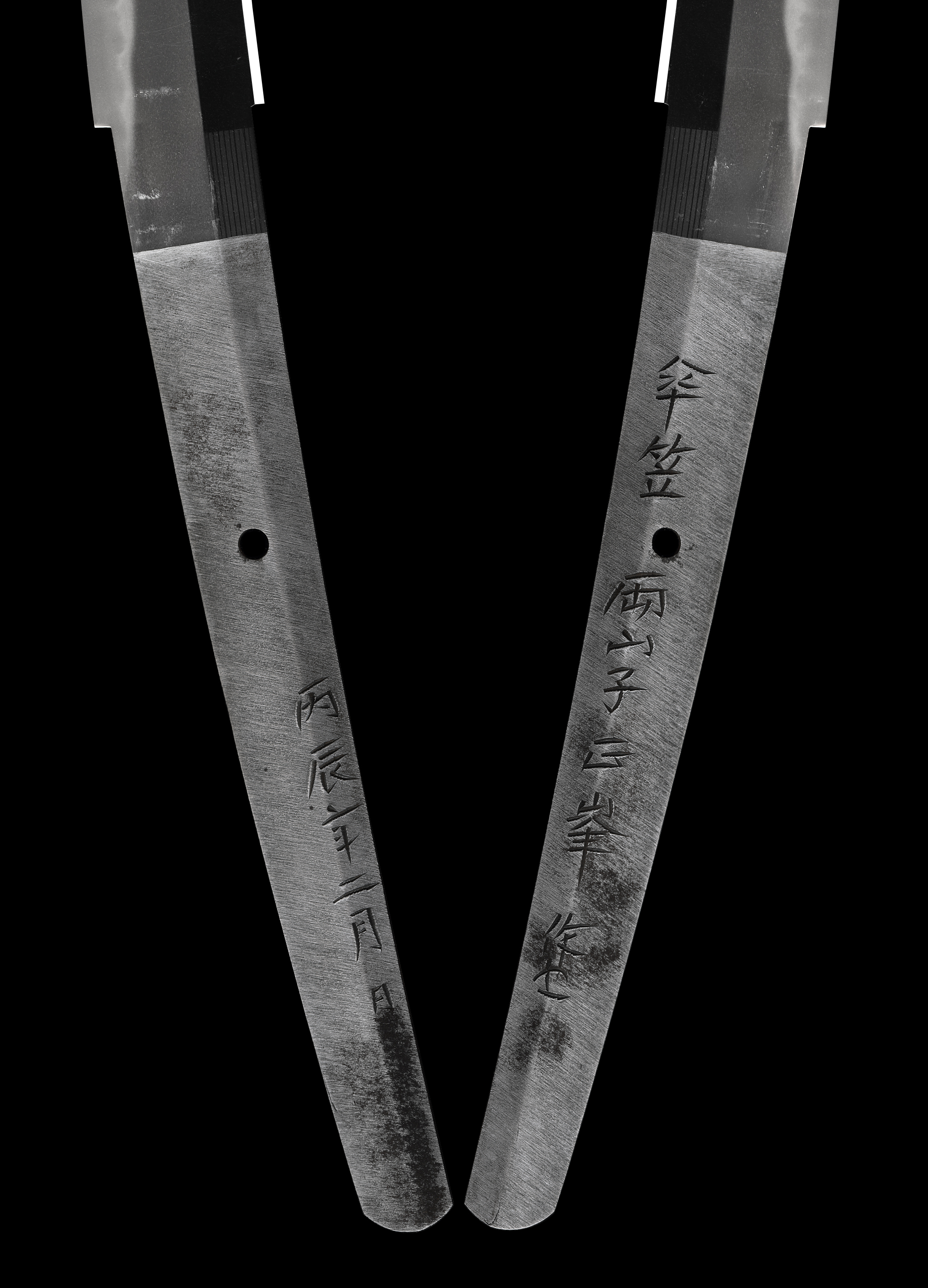Previous answer is
:Sanryu Ryosanshi Masamine Saku Kore
Hinoe-Tatsu Nen 2 Gatsu Hi (Living National Treasure)傘笠両山子正峯作之
Special feature:umitani Seiho(Masamine) was called Sumitani Yoichiro who was studying at universuty Ritumeikan Department of science and engineering. After graduated this universuty, he became a student of the Sakurai Masayuki and also he established sword making place as the name of Sanryutei.
He got the prize of Masamune syo
( the name of the prize which is the top sword smith.) three times.
He was recognized as Ningen kokuho(human national treasure) 1981,
April 20th.(Important intangible cultural heritage)
He studied to make Japanese nice tamahagane by himself at his small iron works.
He made swords by using his own Tamahagane and succeeded
his sword which is called Sumitani Cyoji.
He made sword for self-defense for Palace insiderand also emperor
He was reigned over a top seat during these days.
But unfortunately he passed away at Heise 10th (1997)December 12th at 77 year of age.
This blade is massive nice shape like Kamakura Ichimonji style.
Powerful Bo-hi are engraved both sides of the blade.
Preeminent fantastic Jigane and also Magnificence Hamon makes us
satisfaction and pleasure.
It is very very hard to buy Ningen kokuho(Human national treasure).
We strongly recommend this sword which was made by his own small ironworks.
in 1956, he made sword craft center “Sanryu-tei” at his home.
From, 1957 to 1964, he got the Nyusho prize at Shinsakuto Gizyutu Happyokai competition.
In 1965, he got also the Masamune-sho prize and Meiyo Kaicho-sho prize at Shinsaku Meito-ten competition.
And he made sword craft center “Ryozan-tei”
In 1966, he got the Masamune-sho prize again, and he got Mainichi Shinbunsya-sho prize.
He became Mukansa swordsmith and judge of Shinsaku Meito-ten competition.
In 1967, he became Mukei Bunkazai of Ishikawa pref (Intangible Cultural Properties of Ishikawa pref).
In 1972, he got the 1st Kunzansho prize.
In 1974, he got the Masamune-sho prize.
In 1981, he became the Ningen Kokuho (Living National Treasures of Japan).
In 1984, he got the Shiju-Hosho prize.
In 1990, he made sword for current Emperor of Japan.
He discoursed at the British Museum.
From 1991 to 1994, he made some swords for Emperor’s family.
In 1992, he receive the order from Ise Jingu Grand Shrine.
In 1998, he passed away when he was 77 years old.
==============================================
Appraisal Quiz #733 (March 11th, 2023)
Who made this sword do you think ?
==============================================
Blade length:72.7cm or 28.62inches.
Sori:2.3cm or 0.90inches.
Mekugi:2
Width at the hamachi:3.0cm or 1.18inches.
Width at the Kissaki:2.45 cm or 0.96inches.
Kasane:0.65cm or 0.25inches.
The weight of the sword:805grams.
Shape: Wide and thick blade with deep Sori.
There are Bo-Hi on both side of the blade. The Kissaki is O-Kissaki. The blade is heavy and healthy.
Jigane: Ko Itame Hada well grained with Jinie attach. There are Chikei and Utsuri. The Jigane is clear.
Hamon: Ko Nie Deki and Nioi Deki, Choji Midare. Gunome Midare base, Choji-Ba, square shape Ha, and pointed shape Ha with Ashi and Yo. There are faint Sunagashi in the Ha. The Nioikuchi is bright. Boshi is Notare and Midare style and round shape.
================================================
Answer will be posted at next Appraisal Quiz.
================================================
(Please acknowledge not replying to mail about Appraisal Quiz by our convenience.)


